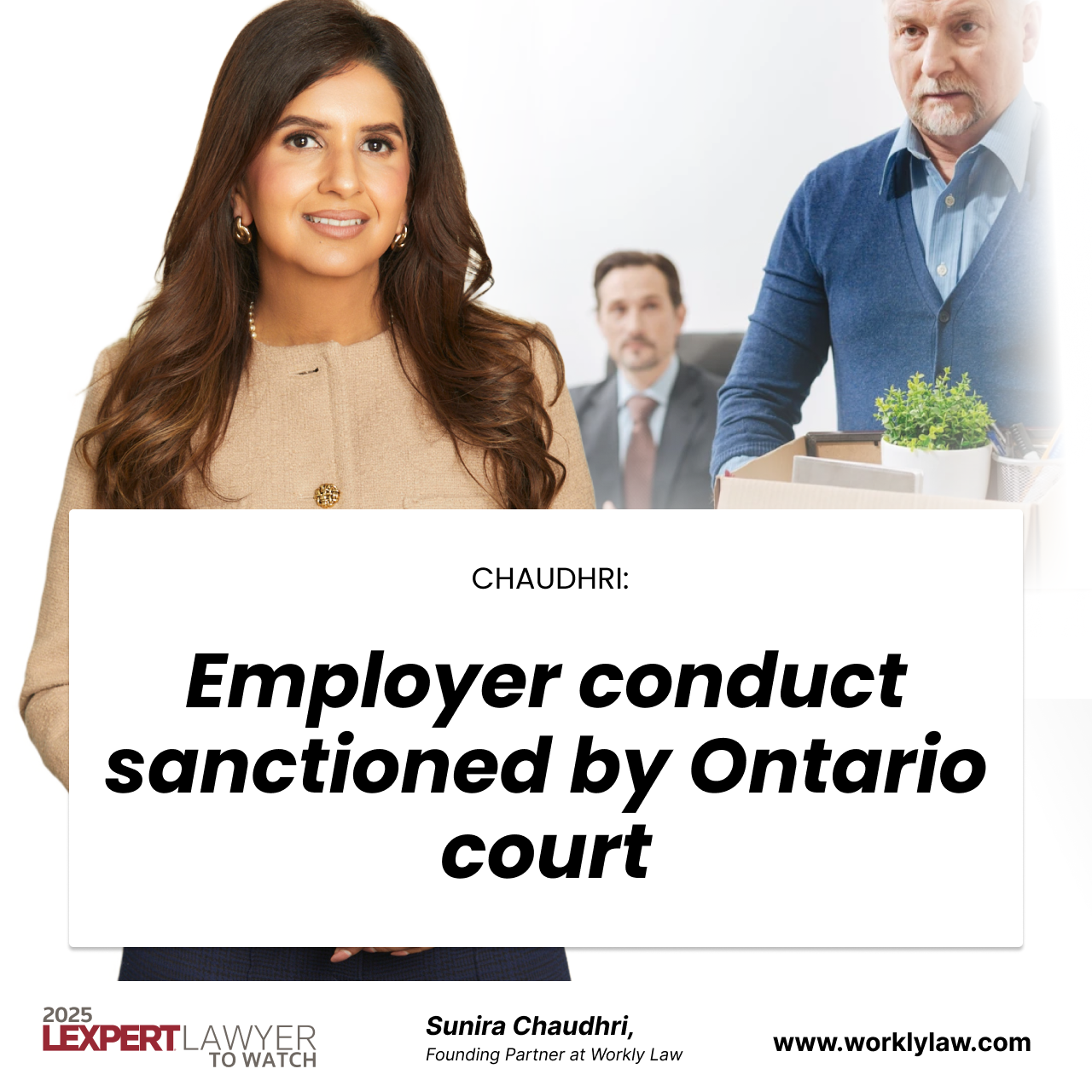Sunira Chaudhri
Category: news
Date:
CHAUDHRI: Linkedin can make or break your employment case

Years ago I represented a terminated executive in her wrongful dismissal case. Before trial the defendant employer served us with copies of Linkedin messages between my client and a current employee of her former employer.
The messages captured the two commiserating over some shared poor experiences while working together. The messages were relatively banal and of little import as we successfully settled the case for a sizable sum at pretrial. But there was a lesson to be learned.
The experience led me to warn each of my clients about the power and influence of Linkedin and other networking platforms in litigation.
Terminated employees often turn to Linkedin to create content, like posts, build connections, and file job applications. Most do not immediately appreciate that much of this online data plays a central role in wrongful dismissal cases.
Reckless use of Linkedin can tank a wrongful dismissal case. An obvious bungle occurs when an employee overstates, exaggerates or misrepresents their work history or credentials on a Linkedin profile. While it may seem commonplace to embellish one’s track record, during litigation, any misstatements could be used to skewer employee credibility in the eyes of the court. Keep it truthful.
Correspondence on Linkedin can also be of material consequence. Communicating with former colleagues who are still employed with an ex-employer should be done with care, if at all. Employees that disparage or otherwise speak negatively about their former workplace (especially in writing) could attract bad faith allegations that could derail the litigation or lower the value of their own claims.
Another issue arises when terminated employees update their Linkedin profile to reflect current work experience when, in fact, they are not earning income. For example if a litigant updates Linkedin with a new voluntary or unpaid board position, it will lead a defendant employer to contend that the litigant is now working and their damages, if any, have been mitigated.
On the brighter side, Linkedin can also strengthen a wrongful dismissal case. One can use it to easily broaden networks, seek introductions to hiring managers and scout job opportunities. Employees can apply to roles on Linkedin and keep records of their job searches. Maintaining a log of what one does to look for work is critical evidence in every employment case. Employees who have voluminous job search evidence are almost always regarded more favourably by the courts.
Linkedin can also be used to complete courses to update skills and training. Sometimes employees need to retrain or upgrade skills in order to apply for a competitive job. This is particularly so for those employees who were promoted several times, over time at an organization. Taking courses helps to establish an earnest commitment to returning to the job market with a stronger resume and up-to-date skills.
I would be remiss if I did not mention that Linkedin has evolved into a forum that allows professionals to toot their own horns and celebrate their own accomplishments. Professionals have the ability to create powerful narratives around what they bring to the table. One’s Linkedin presence is sure to become a meaningful legal consideration in wrongful dismissal cases.
Whether you are terminated or not, use Linkedin and other networking platforms judiciously and harness its power to your advantage.
Have a workplace problem? Maybe I can help! Email me at sunira@worklylaw.com and your question may be featured in a future column.
Tags: Employment , Law , Social Media
Related articles
Tags: ESA Rules , Minimum wage
23 Sep 2025
POWER: Ontario Minimum Wage Increase Effective October 1, 2025
Effective October 1, 2025, Ontario’s general minimum wage will increase to $17.60 per hour (up from $17.20). This annual adjustment is tied to the Consumer Price Index and affects nearly all employees covered by the Employment Standards Act, 2000 (ESA). For employers, this increase is a timely reminder to review pay practices, budgets, and compliance processes before the fall.
Tags: Termimation
23 Sep 2025
CHAUDHRI: Employer conduct sanctioned by Ontario court
Courts do not want employees to be 'starved' by employers in an effort to have them accept lower packages on termination


